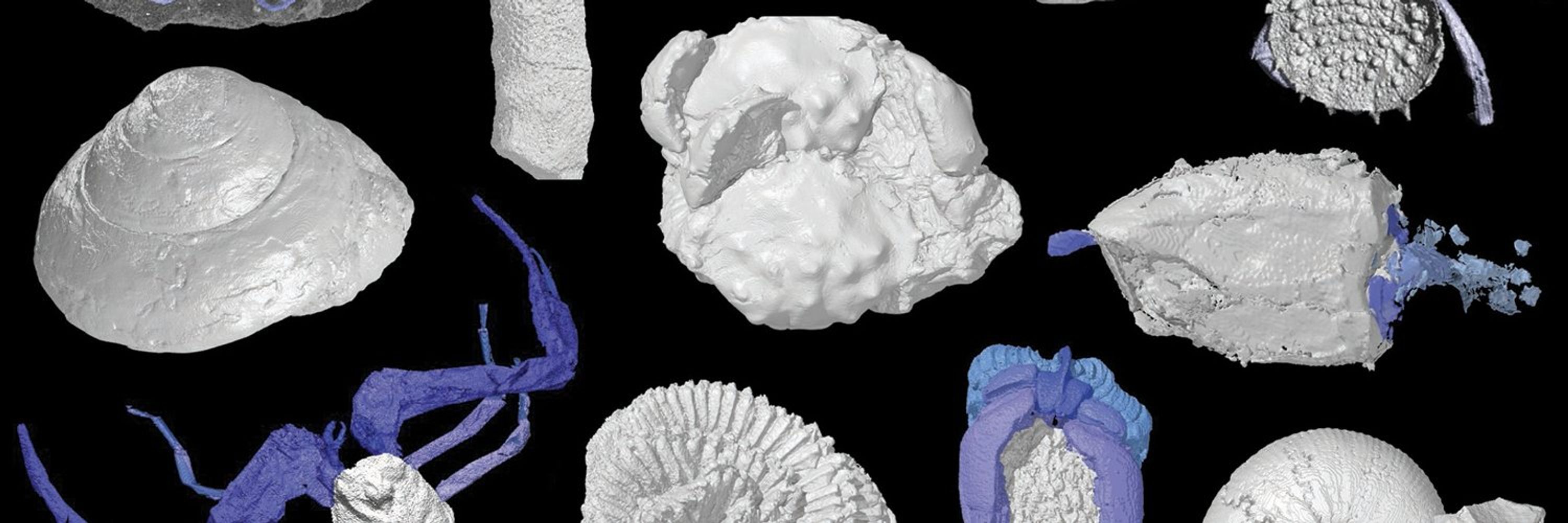
Imran Rahman
@imranrahman.bsky.social
Palaeobiologist | Principal Researcher @nhm-london.bsky.social | Editor-in-Chief @journalsystpal.bsky.social | Honorary Associate @morethanadodo.bsky.social | he/him
https://www.nhm.ac.uk/our-science/departments-and-staff/staff-directory/imran-rahman.html
https://www.nhm.ac.uk/our-science/departments-and-staff/staff-directory/imran-rahman.html
Pinned
Imran Rahman
@imranrahman.bsky.social
· Jun 26
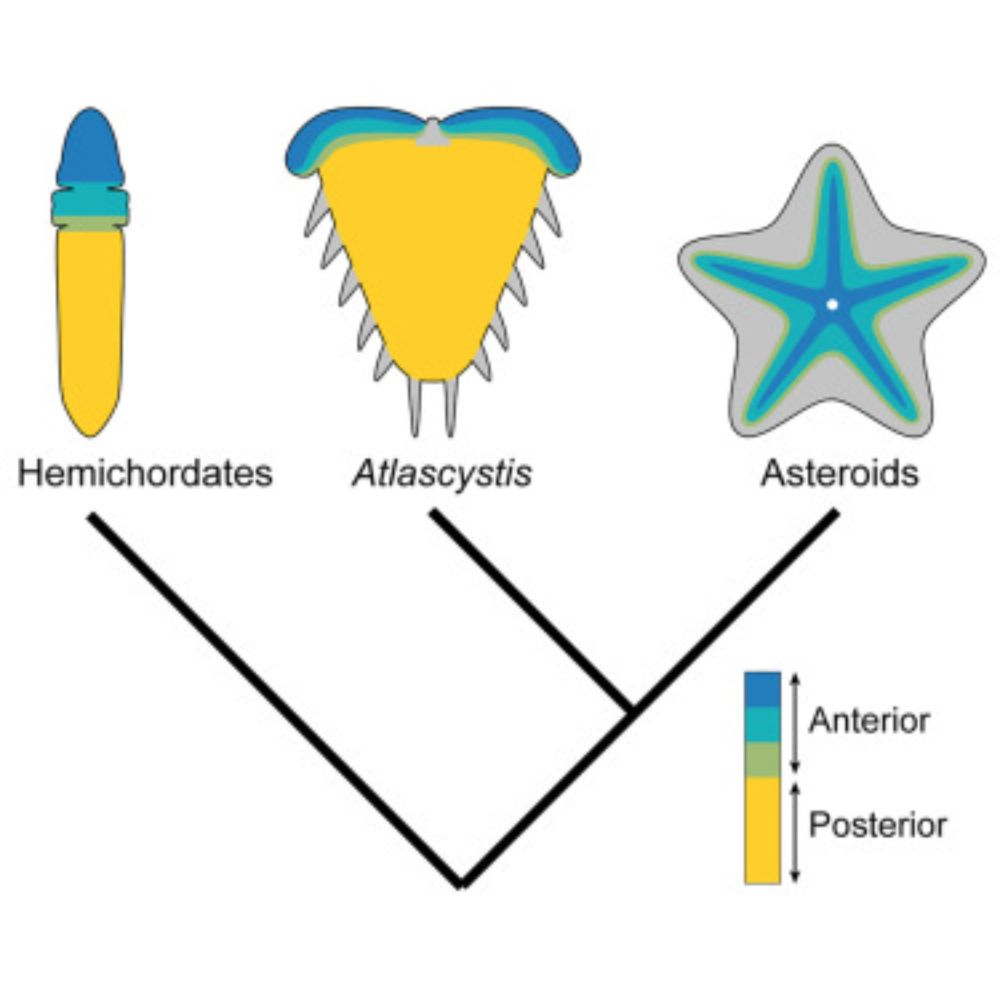
A new Cambrian stem-group echinoderm reveals the evolution of the anteroposterior axis
Woodgate et al. describe a new bilaterally symmetrical echinoderm, Atlascystis acantha,
from the Cambrian of Morocco. Comparisons of plate growth with other echinoderms reveal
that Atlascystis possess...
www.cell.com
Delighted to share our paper in @currentbiology.bsky.social iology.bsky.social with a palaeo-evo-devo perspective on the evolution of symmetry in echinoderms. Led by Steffi Woodgate with Frankie Dunn, @echinerd.bsky.social, @laurentformery.bsky.social & Sam Zamora
www.cell.com/current-biol...-5
www.cell.com/current-biol...-5
Delighted to share our special collection of 24 landmark papers in vertebrate palaeontology published in @journalsystpal.bsky.social in the last 15 years, assembled to coincide with #SVP2025 #2025SVP. All these papers are free to access now and through November: www.tandfonline.com/journals/tjs...

JSP Landmark Papers in Vertebrate Palaeontology
Explore the article collection: JSP Landmark Papers in Vertebrate Palaeontology. Published in Journal of Systematic Palaeontology.
www.tandfonline.com
October 30, 2025 at 10:28 AM
Delighted to share our special collection of 24 landmark papers in vertebrate palaeontology published in @journalsystpal.bsky.social in the last 15 years, assembled to coincide with #SVP2025 #2025SVP. All these papers are free to access now and through November: www.tandfonline.com/journals/tjs...
Reposted by Imran Rahman
In honour of #2025SVP #SVP2025 in the UK, @journalsystpal.bsky.social has a special collection of landmark papers in vertebrate palaeontology. These papers have revolutionised our understanding of the systematics of major vertebrare groups, and are open access for Nov: share.google/1DIgZYMyjXUH...

JSP Landmark Papers in Vertebrate Palaeontology
Explore the article collection: JSP Landmark Papers in Vertebrate Palaeontology. Published in Journal of Systematic Palaeontology.
share.google
October 29, 2025 at 6:14 PM
In honour of #2025SVP #SVP2025 in the UK, @journalsystpal.bsky.social has a special collection of landmark papers in vertebrate palaeontology. These papers have revolutionised our understanding of the systematics of major vertebrare groups, and are open access for Nov: share.google/1DIgZYMyjXUH...
Reposted by Imran Rahman
Listen to our Co-Editors-in-Chief, Imran Rahman and Susannah Maidment discuss the NHM's mission, cutting-edge research published in JSP, areas for future coverage—and, of course, their favourite dinosaurs. buff.ly/RbPLT3b @tweetisaurus.bsky.social @imranrahman.bsky.social @tandfresearch.bsky.social

An Interview with Imran Rahman & Susannah Maidment, Journal of Systematic Palaeontology
Join Imran Rahman and Susannah Maidment, Co-Editors of the Journal of Systematic Palaeontology, as they discuss the Natural History Museum's mission, cutting-edge research published in their journal,…
buff.ly
October 28, 2025 at 11:02 AM
Listen to our Co-Editors-in-Chief, Imran Rahman and Susannah Maidment discuss the NHM's mission, cutting-edge research published in JSP, areas for future coverage—and, of course, their favourite dinosaurs. buff.ly/RbPLT3b @tweetisaurus.bsky.social @imranrahman.bsky.social @tandfresearch.bsky.social
Reposted by Imran Rahman
A new 125-million-year-old iguanodon species has been discovered: 𝘾𝙖𝙧𝙞𝙤𝙘𝙚𝙘𝙪𝙨 𝙗𝙤𝙘𝙖𝙜𝙚𝙞 🦖 a new basal hadrosauroid from the Lower Cretaceous of Portugal
buff.ly/Y92lRTR
Read the full study by Bertozzo et al. in JSP: buff.ly/FMnyy1m
#Dinosaurs #PaleoSky #NaturalHistory #NHM #JSP #Fossils
buff.ly/Y92lRTR
Read the full study by Bertozzo et al. in JSP: buff.ly/FMnyy1m
#Dinosaurs #PaleoSky #NaturalHistory #NHM #JSP #Fossils

New dinosaur species found in Portugal
A new 125-million-year-old iguanodon species has been revealed by palaeontologists, with the publication of the study on the discovery in the international Journal of Systematic Paleontology.
www.theportugalnews.com
September 16, 2025 at 2:59 PM
A new 125-million-year-old iguanodon species has been discovered: 𝘾𝙖𝙧𝙞𝙤𝙘𝙚𝙘𝙪𝙨 𝙗𝙤𝙘𝙖𝙜𝙚𝙞 🦖 a new basal hadrosauroid from the Lower Cretaceous of Portugal
buff.ly/Y92lRTR
Read the full study by Bertozzo et al. in JSP: buff.ly/FMnyy1m
#Dinosaurs #PaleoSky #NaturalHistory #NHM #JSP #Fossils
buff.ly/Y92lRTR
Read the full study by Bertozzo et al. in JSP: buff.ly/FMnyy1m
#Dinosaurs #PaleoSky #NaturalHistory #NHM #JSP #Fossils
Reposted by Imran Rahman
New Paper by Parry et al., reinterpreting the oldest diverse #jellyfish fauna as sessile polypoid dinomischids 🪼
These findings significantly expand the temporal and geographical range of dinomischids, elucidating their morphological and taphonomic variation.
buff.ly/ERV7P3C
#PaleoSky #Fossils
These findings significantly expand the temporal and geographical range of dinomischids, elucidating their morphological and taphonomic variation.
buff.ly/ERV7P3C
#PaleoSky #Fossils

Browse all journals
Browse all journals
doi.org
September 18, 2025 at 9:47 AM
New Paper by Parry et al., reinterpreting the oldest diverse #jellyfish fauna as sessile polypoid dinomischids 🪼
These findings significantly expand the temporal and geographical range of dinomischids, elucidating their morphological and taphonomic variation.
buff.ly/ERV7P3C
#PaleoSky #Fossils
These findings significantly expand the temporal and geographical range of dinomischids, elucidating their morphological and taphonomic variation.
buff.ly/ERV7P3C
#PaleoSky #Fossils
Reposted by Imran Rahman
A new paper by Bertozzo et al. describes 𝘾𝙖𝙧𝙞𝙤𝙘𝙚𝙘𝙪𝙨 𝙗𝙤𝙘𝙖𝙜𝙚𝙞, a basal hadrosauroid from the Lower Cretaceous of Portugal 🦖 The most complete iguanodontian skull specimen found in Portugal, offers insights into cranial development and anatomy during hadrosauroid evolution: buff.ly/FMnyy1m #PaleoSky

September 15, 2025 at 2:12 PM
A new paper by Bertozzo et al. describes 𝘾𝙖𝙧𝙞𝙤𝙘𝙚𝙘𝙪𝙨 𝙗𝙤𝙘𝙖𝙜𝙚𝙞, a basal hadrosauroid from the Lower Cretaceous of Portugal 🦖 The most complete iguanodontian skull specimen found in Portugal, offers insights into cranial development and anatomy during hadrosauroid evolution: buff.ly/FMnyy1m #PaleoSky
Reposted by Imran Rahman
Today new publication has been released in @journalsystpal.bsky.social
We are proud to present you Cariocecus bocagei, a new hadrosauroid from the Papo Seco Formation (Barremian, Early K) of Portugal.
Come with me in this post series to learn more about it! 1/x
We are proud to present you Cariocecus bocagei, a new hadrosauroid from the Papo Seco Formation (Barremian, Early K) of Portugal.
Come with me in this post series to learn more about it! 1/x

September 15, 2025 at 5:54 PM
Today new publication has been released in @journalsystpal.bsky.social
We are proud to present you Cariocecus bocagei, a new hadrosauroid from the Papo Seco Formation (Barremian, Early K) of Portugal.
Come with me in this post series to learn more about it! 1/x
We are proud to present you Cariocecus bocagei, a new hadrosauroid from the Papo Seco Formation (Barremian, Early K) of Portugal.
Come with me in this post series to learn more about it! 1/x
Reposted by Imran Rahman
Did you know we are one of two journals produced by the Natural History Museum London. We champion the importance of collections-based systematics and our papers cover fossil species from across the tree of life, substantially contributing to the systematics of extinct taxa. So, why publish with us?

September 4, 2025 at 10:16 AM
Did you know we are one of two journals produced by the Natural History Museum London. We champion the importance of collections-based systematics and our papers cover fossil species from across the tree of life, substantially contributing to the systematics of extinct taxa. So, why publish with us?
Reposted by Imran Rahman
Salps, a clear, gelatinous ocean animal, use jet propulsion to glide through the water without leaving insight into how they move.
With harmless green dye, former MIT-WHOI Joint Program graduate student Kelly Sutherland was able to study salp locomotion at the Liquid Jungle Lab in Panama.
With harmless green dye, former MIT-WHOI Joint Program graduate student Kelly Sutherland was able to study salp locomotion at the Liquid Jungle Lab in Panama.

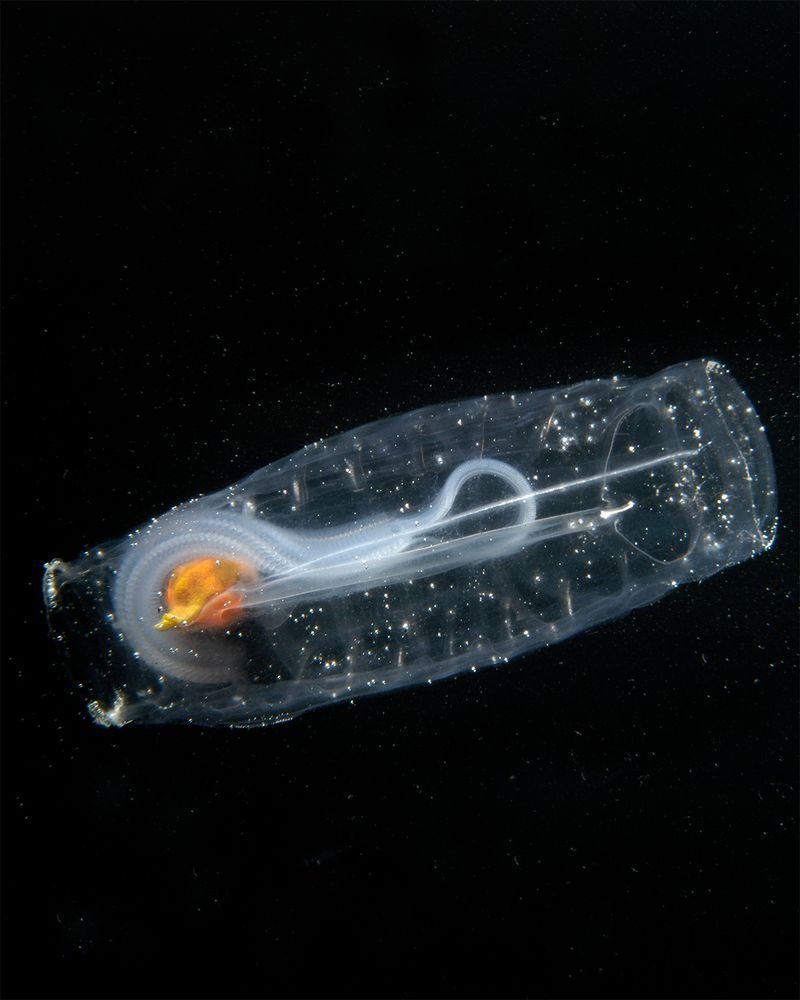

September 2, 2025 at 7:00 PM
Salps, a clear, gelatinous ocean animal, use jet propulsion to glide through the water without leaving insight into how they move.
With harmless green dye, former MIT-WHOI Joint Program graduate student Kelly Sutherland was able to study salp locomotion at the Liquid Jungle Lab in Panama.
With harmless green dye, former MIT-WHOI Joint Program graduate student Kelly Sutherland was able to study salp locomotion at the Liquid Jungle Lab in Panama.
Reposted by Imran Rahman
New updated preprint! Many thanks to reviewers for their suggestions and helpful advice for improving our manuscript. Check it out if you're interested in fossils, phylogenies, and modeling morphologic evolution! 🧪

Assessing the impact of character evolution models on phylogenetic and macroevolutionary inferences from fossil data
Understanding the evolution and phylogenetic distribution of morphologic traits is fundamental to macroevolutionary research. Despite decades of major advances and key insights from molecular systemat...
www.biorxiv.org
September 2, 2025 at 5:07 PM
New updated preprint! Many thanks to reviewers for their suggestions and helpful advice for improving our manuscript. Check it out if you're interested in fossils, phylogenies, and modeling morphologic evolution! 🧪
Reposted by Imran Rahman
🚨 Hiring! We are looking for a postdoctoral researcher with expertise in computational fluid dynamics and structural simulations to investigate biomechanics and mechanosensory feedback in insect flight.
Extreme agility ✔️
Morphological computing ✔️
Meshes! ✔️
jobs.rvc.ac.uk/vacancy.aspx...
Extreme agility ✔️
Morphological computing ✔️
Meshes! ✔️
jobs.rvc.ac.uk/vacancy.aspx...

a close up of a fly 's head with a blurred background .
ALT: a close up of a fly 's head with a blurred background .
media.tenor.com
September 2, 2025 at 4:22 PM
🚨 Hiring! We are looking for a postdoctoral researcher with expertise in computational fluid dynamics and structural simulations to investigate biomechanics and mechanosensory feedback in insect flight.
Extreme agility ✔️
Morphological computing ✔️
Meshes! ✔️
jobs.rvc.ac.uk/vacancy.aspx...
Extreme agility ✔️
Morphological computing ✔️
Meshes! ✔️
jobs.rvc.ac.uk/vacancy.aspx...
Reposted by Imran Rahman
New paper out in the Journal of Systematic Palaeontology 🦖 Investigating the phylogenetic relationships of Unenlagiidae among Paraves (Dinosauria) by M. Motta et al. (2025)
Read the full study here: buff.ly/0ytggCG
#Dinosaurs #Fossil #NHM #NaturalHistory #Biodiversity
Read the full study here: buff.ly/0ytggCG
#Dinosaurs #Fossil #NHM #NaturalHistory #Biodiversity

August 26, 2025 at 7:00 AM
New paper out in the Journal of Systematic Palaeontology 🦖 Investigating the phylogenetic relationships of Unenlagiidae among Paraves (Dinosauria) by M. Motta et al. (2025)
Read the full study here: buff.ly/0ytggCG
#Dinosaurs #Fossil #NHM #NaturalHistory #Biodiversity
Read the full study here: buff.ly/0ytggCG
#Dinosaurs #Fossil #NHM #NaturalHistory #Biodiversity
Reposted by Imran Rahman
Did you know.. Molluscs are the second most diverse phylum and possibly the most disparate! 🐚🦪🐌🐙🦑
A recent study by Karapunar et al. (2024) documents the phylogeny of Pleurotomariidae, the longest-living gastropod group, comparing different shell characters: buff.ly/2pEof6e @spissatella.bsky.social
A recent study by Karapunar et al. (2024) documents the phylogeny of Pleurotomariidae, the longest-living gastropod group, comparing different shell characters: buff.ly/2pEof6e @spissatella.bsky.social

August 27, 2025 at 9:16 AM
Did you know.. Molluscs are the second most diverse phylum and possibly the most disparate! 🐚🦪🐌🐙🦑
A recent study by Karapunar et al. (2024) documents the phylogeny of Pleurotomariidae, the longest-living gastropod group, comparing different shell characters: buff.ly/2pEof6e @spissatella.bsky.social
A recent study by Karapunar et al. (2024) documents the phylogeny of Pleurotomariidae, the longest-living gastropod group, comparing different shell characters: buff.ly/2pEof6e @spissatella.bsky.social
Reposted by Imran Rahman
Its #FossilFriday - check out the snout (lateral view) of 𝙋𝙨𝙚𝙪𝙙𝙝𝙚𝙨𝙥𝙚𝙧𝙤𝙨𝙪𝙘𝙝𝙪𝙨 𝙟𝙖𝙘𝙝𝙖𝙡𝙚𝙧𝙞, from the Los Colorados Formation (Norian), Argentina. This is the only specimen of one of the best known early non-crocodyliform crocodylomorphs.
Read more: buff.ly/h42ORcw #MindBlown #Fossils
Read more: buff.ly/h42ORcw #MindBlown #Fossils

August 29, 2025 at 7:48 AM
Its #FossilFriday - check out the snout (lateral view) of 𝙋𝙨𝙚𝙪𝙙𝙝𝙚𝙨𝙥𝙚𝙧𝙤𝙨𝙪𝙘𝙝𝙪𝙨 𝙟𝙖𝙘𝙝𝙖𝙡𝙚𝙧𝙞, from the Los Colorados Formation (Norian), Argentina. This is the only specimen of one of the best known early non-crocodyliform crocodylomorphs.
Read more: buff.ly/h42ORcw #MindBlown #Fossils
Read more: buff.ly/h42ORcw #MindBlown #Fossils
Reposted by Imran Rahman
Hi all, me, @richardjbutler.bsky.social and the amazing UK-US-Moroccan team are delighted to announce that.. we have a new specimen of Spicomellus AND IT'S WAY WEIRDER AND WAY COOLER THAN WE EVER IMAGINED!!

August 27, 2025 at 3:22 PM
Hi all, me, @richardjbutler.bsky.social and the amazing UK-US-Moroccan team are delighted to announce that.. we have a new specimen of Spicomellus AND IT'S WAY WEIRDER AND WAY COOLER THAN WE EVER IMAGINED!!
Reposted by Imran Rahman
That’s a wrap on my two months @thepalass.bsky.social research internship at the NHM 🦖! Spent two months working on some awesome techniques (bet you can’t guess by the photos 😂) with @tweetisaurus.bsky.social and @imranrahman.bsky.social! Grateful for the staff involved in making this happen.



August 23, 2025 at 8:32 AM
That’s a wrap on my two months @thepalass.bsky.social research internship at the NHM 🦖! Spent two months working on some awesome techniques (bet you can’t guess by the photos 😂) with @tweetisaurus.bsky.social and @imranrahman.bsky.social! Grateful for the staff involved in making this happen.
Reposted by Imran Rahman
#FossilFriday 🦎 The right forelimb of 𝘾𝙖𝙡𝙖𝙣𝙜𝙪𝙗𝙖𝙣 𝙖𝙡𝙖𝙢𝙤𝙞 - a fossil lizard from the Early Cretaceous Crato Formation Brazil.
This specimen replaces the original 𝘊. 𝘢𝘭𝘢𝘮𝘰𝘪 holotype, which was lost in 2018 when a fire destroyed the National Museum of Brazil collections.
Read more: buff.ly/BCtn152
This specimen replaces the original 𝘊. 𝘢𝘭𝘢𝘮𝘰𝘪 holotype, which was lost in 2018 when a fire destroyed the National Museum of Brazil collections.
Read more: buff.ly/BCtn152

August 22, 2025 at 7:00 AM
#FossilFriday 🦎 The right forelimb of 𝘾𝙖𝙡𝙖𝙣𝙜𝙪𝙗𝙖𝙣 𝙖𝙡𝙖𝙢𝙤𝙞 - a fossil lizard from the Early Cretaceous Crato Formation Brazil.
This specimen replaces the original 𝘊. 𝘢𝘭𝘢𝘮𝘰𝘪 holotype, which was lost in 2018 when a fire destroyed the National Museum of Brazil collections.
Read more: buff.ly/BCtn152
This specimen replaces the original 𝘊. 𝘢𝘭𝘢𝘮𝘰𝘪 holotype, which was lost in 2018 when a fire destroyed the National Museum of Brazil collections.
Read more: buff.ly/BCtn152
Reposted by Imran Rahman
Meet our brilliant team of Associate Editors!
Dr Katie Collins is a molluscan palaeobiologist 🐚 specializing in bivalve macroevolution and the morphometrics of conchiferan molluscs.. and is a general measurement nerd!
Read more about her research: buff.ly/GDH0Obv
@spissatella.bsky.social #NHM
Dr Katie Collins is a molluscan palaeobiologist 🐚 specializing in bivalve macroevolution and the morphometrics of conchiferan molluscs.. and is a general measurement nerd!
Read more about her research: buff.ly/GDH0Obv
@spissatella.bsky.social #NHM

August 20, 2025 at 7:01 AM
Meet our brilliant team of Associate Editors!
Dr Katie Collins is a molluscan palaeobiologist 🐚 specializing in bivalve macroevolution and the morphometrics of conchiferan molluscs.. and is a general measurement nerd!
Read more about her research: buff.ly/GDH0Obv
@spissatella.bsky.social #NHM
Dr Katie Collins is a molluscan palaeobiologist 🐚 specializing in bivalve macroevolution and the morphometrics of conchiferan molluscs.. and is a general measurement nerd!
Read more about her research: buff.ly/GDH0Obv
@spissatella.bsky.social #NHM
Reposted by Imran Rahman
For #FossilFriday - the #skull of *Prosqualodon australis*, an #extinct relative of toothed whales like dolphins and porpoises, which was recovered from the Miocene of Argentina 🦴
Read the full article by Gaetán et al. (2025) in JSP: buff.ly/FkwovSK
#Dinosaurs #NaturalHistory #Systematics #NHM
Read the full article by Gaetán et al. (2025) in JSP: buff.ly/FkwovSK
#Dinosaurs #NaturalHistory #Systematics #NHM


August 15, 2025 at 7:02 AM
For #FossilFriday - the #skull of *Prosqualodon australis*, an #extinct relative of toothed whales like dolphins and porpoises, which was recovered from the Miocene of Argentina 🦴
Read the full article by Gaetán et al. (2025) in JSP: buff.ly/FkwovSK
#Dinosaurs #NaturalHistory #Systematics #NHM
Read the full article by Gaetán et al. (2025) in JSP: buff.ly/FkwovSK
#Dinosaurs #NaturalHistory #Systematics #NHM
Reposted by Imran Rahman
Around this time in 1811, 12-year-old Mary Anning began excavating the first correctly identified ichthyosaur. Her brother found the skull and she uncovered the skeleton, later named a 𝘛𝘦𝘮𝘯𝘰𝘥𝘰𝘯𝘵𝘰𝘴𝘢𝘶𝘳𝘶𝘴
Read about the phylogeny of ichthyosaurs by B.C. Moon (2017): buff.ly/4IC8Cz8
#NaturalHistory
Read about the phylogeny of ichthyosaurs by B.C. Moon (2017): buff.ly/4IC8Cz8
#NaturalHistory

August 13, 2025 at 11:21 AM
Around this time in 1811, 12-year-old Mary Anning began excavating the first correctly identified ichthyosaur. Her brother found the skull and she uncovered the skeleton, later named a 𝘛𝘦𝘮𝘯𝘰𝘥𝘰𝘯𝘵𝘰𝘴𝘢𝘶𝘳𝘶𝘴
Read about the phylogeny of ichthyosaurs by B.C. Moon (2017): buff.ly/4IC8Cz8
#NaturalHistory
Read about the phylogeny of ichthyosaurs by B.C. Moon (2017): buff.ly/4IC8Cz8
#NaturalHistory
Reposted by Imran Rahman
A new study in JSP reports the first record of 𝘗𝘭𝘪𝘰𝘵𝘳𝘢𝘨𝘶𝘴 (Bovidae) from the Early Pleistocene of eastern Asia. Phylogenetic results place it within Caprini, alongside modern goats, sheep and muskoxen. Read the full study by Bai et al. (2025): buff.ly/UmeXcHQ

August 11, 2025 at 10:59 AM
A new study in JSP reports the first record of 𝘗𝘭𝘪𝘰𝘵𝘳𝘢𝘨𝘶𝘴 (Bovidae) from the Early Pleistocene of eastern Asia. Phylogenetic results place it within Caprini, alongside modern goats, sheep and muskoxen. Read the full study by Bai et al. (2025): buff.ly/UmeXcHQ
Reposted by Imran Rahman
🦕 Did you know…
By the time 𝙏𝙮𝙧𝙖𝙣𝙣𝙤𝙨𝙖𝙪𝙧𝙪𝙨 𝙧𝙚𝙭 roamed the Earth, 𝙎𝙩𝙚𝙜𝙤𝙨𝙖𝙪𝙧𝙪𝙨 was already a fossil as it had been extinct for over 80 million years!
Read about the phylogeny of Stegosauria by Maidment et al. (2008): buff.ly/sxw3Qbx
@tweetisaurus.bsky.social #fossils #funfact #MindBlown #PaleoSky
By the time 𝙏𝙮𝙧𝙖𝙣𝙣𝙤𝙨𝙖𝙪𝙧𝙪𝙨 𝙧𝙚𝙭 roamed the Earth, 𝙎𝙩𝙚𝙜𝙤𝙨𝙖𝙪𝙧𝙪𝙨 was already a fossil as it had been extinct for over 80 million years!
Read about the phylogeny of Stegosauria by Maidment et al. (2008): buff.ly/sxw3Qbx
@tweetisaurus.bsky.social #fossils #funfact #MindBlown #PaleoSky

August 6, 2025 at 7:01 AM
🦕 Did you know…
By the time 𝙏𝙮𝙧𝙖𝙣𝙣𝙤𝙨𝙖𝙪𝙧𝙪𝙨 𝙧𝙚𝙭 roamed the Earth, 𝙎𝙩𝙚𝙜𝙤𝙨𝙖𝙪𝙧𝙪𝙨 was already a fossil as it had been extinct for over 80 million years!
Read about the phylogeny of Stegosauria by Maidment et al. (2008): buff.ly/sxw3Qbx
@tweetisaurus.bsky.social #fossils #funfact #MindBlown #PaleoSky
By the time 𝙏𝙮𝙧𝙖𝙣𝙣𝙤𝙨𝙖𝙪𝙧𝙪𝙨 𝙧𝙚𝙭 roamed the Earth, 𝙎𝙩𝙚𝙜𝙤𝙨𝙖𝙪𝙧𝙪𝙨 was already a fossil as it had been extinct for over 80 million years!
Read about the phylogeny of Stegosauria by Maidment et al. (2008): buff.ly/sxw3Qbx
@tweetisaurus.bsky.social #fossils #funfact #MindBlown #PaleoSky
Reposted by Imran Rahman
For #FossilFriday have a look at the Late Cretaceous vertebrate remains of a Transylvanian Titanosaur and an anatomical record of the remains described by Diaz et al. (2025) in JSP.
Read the full study here: buff.ly/0eDwNJI
#PaleoSky #NHM #Dinosaur #Fossils #NaturalHistory #Giant #JSP #MindBlown
Read the full study here: buff.ly/0eDwNJI
#PaleoSky #NHM #Dinosaur #Fossils #NaturalHistory #Giant #JSP #MindBlown
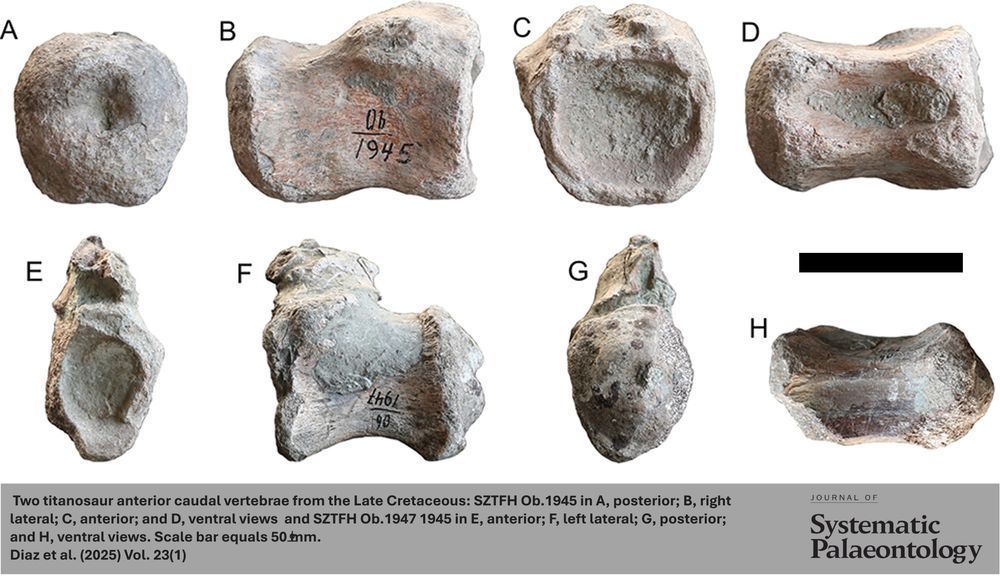

August 1, 2025 at 7:00 AM
For #FossilFriday have a look at the Late Cretaceous vertebrate remains of a Transylvanian Titanosaur and an anatomical record of the remains described by Diaz et al. (2025) in JSP.
Read the full study here: buff.ly/0eDwNJI
#PaleoSky #NHM #Dinosaur #Fossils #NaturalHistory #Giant #JSP #MindBlown
Read the full study here: buff.ly/0eDwNJI
#PaleoSky #NHM #Dinosaur #Fossils #NaturalHistory #Giant #JSP #MindBlown
Reposted by Imran Rahman
Welcome to our new co-Editor-in-Chief Prof. Susannah Maidment
Susannah is a renowned expert on the palaeobiology of bird-hipped ‘ornithischian’ dinosaurs at the Natural History Museum, London
🦕Read about her amazing work: buff.ly/4AfhohB
@tweetisaurus.bsky.social #Fossils #PaleoSky #Dinosaurs
Susannah is a renowned expert on the palaeobiology of bird-hipped ‘ornithischian’ dinosaurs at the Natural History Museum, London
🦕Read about her amazing work: buff.ly/4AfhohB
@tweetisaurus.bsky.social #Fossils #PaleoSky #Dinosaurs
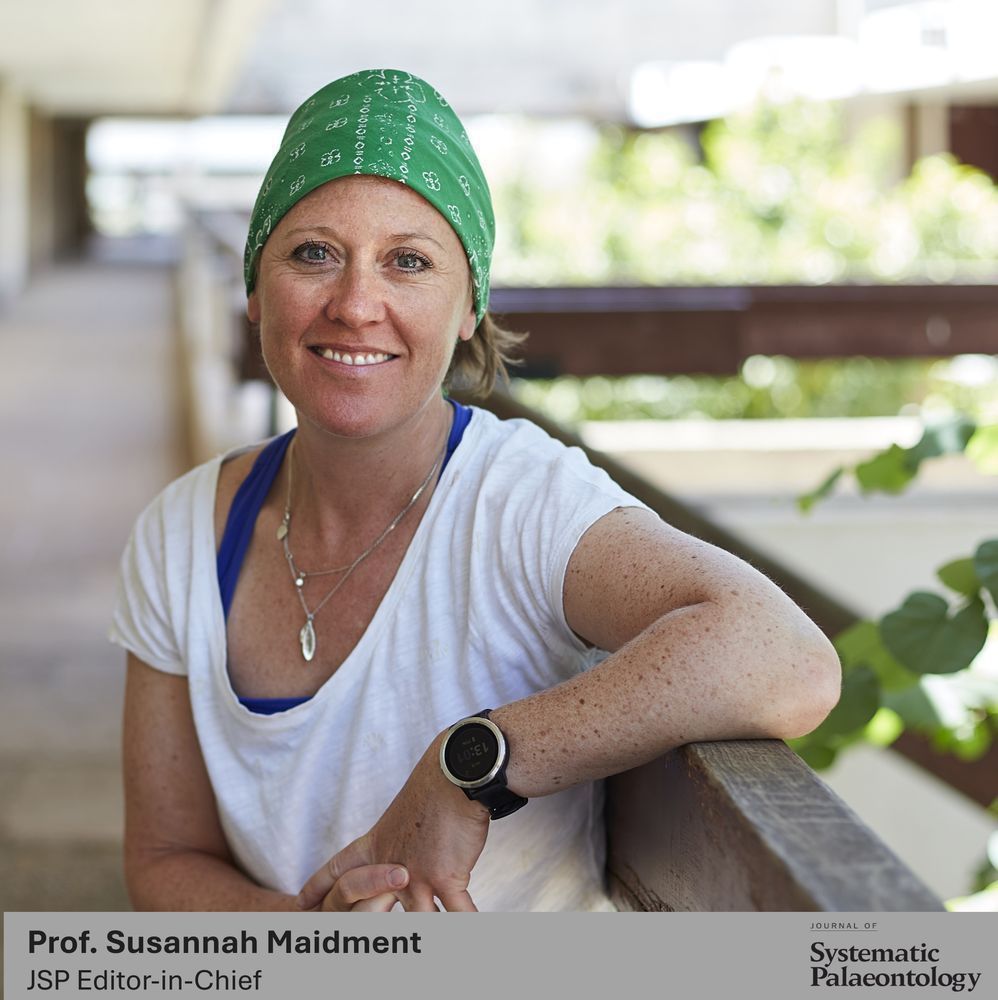
July 30, 2025 at 7:01 AM
Welcome to our new co-Editor-in-Chief Prof. Susannah Maidment
Susannah is a renowned expert on the palaeobiology of bird-hipped ‘ornithischian’ dinosaurs at the Natural History Museum, London
🦕Read about her amazing work: buff.ly/4AfhohB
@tweetisaurus.bsky.social #Fossils #PaleoSky #Dinosaurs
Susannah is a renowned expert on the palaeobiology of bird-hipped ‘ornithischian’ dinosaurs at the Natural History Museum, London
🦕Read about her amazing work: buff.ly/4AfhohB
@tweetisaurus.bsky.social #Fossils #PaleoSky #Dinosaurs
Reposted by Imran Rahman
This is why giraffes are never known to have played soccer.
𝘖𝘳𝘦𝘢 𝘭𝘦𝘱𝘵𝘪𝘢 - An extinct Giraffid species from the Middle Miocene Chinji Formation of Pakistan, with the slenderest metatarsal of any known ruminants, represents the oldest definitive member of the giraffine lineage. Nikos Solounias & Maria Ríos (2025): buff.ly/LqW97Ky
#FossilFriday #PaleoSky #NHM
#FossilFriday #PaleoSky #NHM

July 25, 2025 at 7:05 AM
This is why giraffes are never known to have played soccer.

